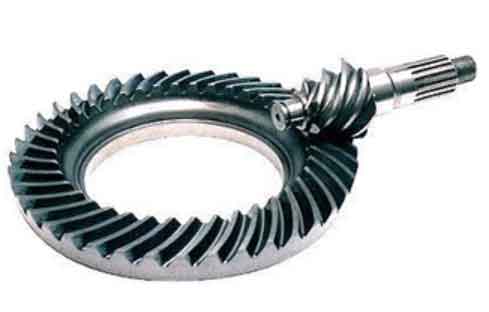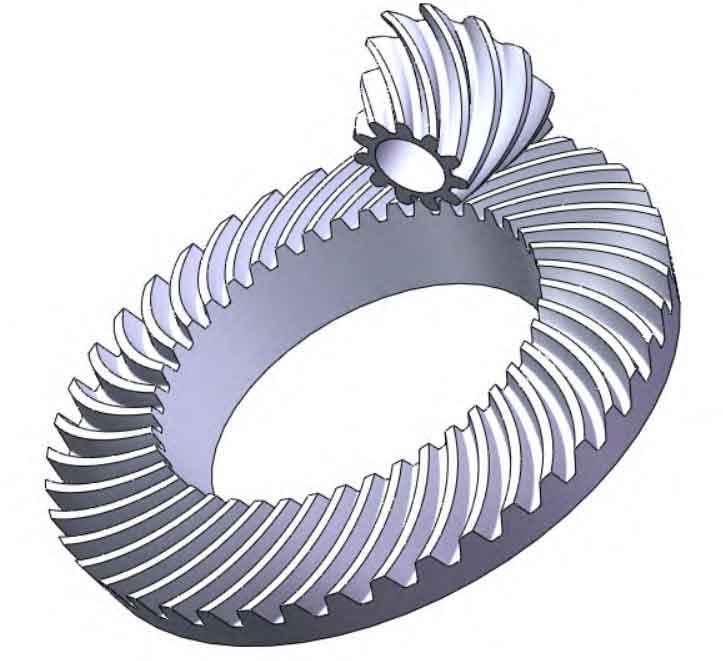Hypoid gears and spiral bevel gears are both types of gears commonly used in various applications. While they share some similarities, there are distinct differences between them. Let’s conduct a comparative analysis of hypoid gears and spiral bevel gears in terms of their design, applications, advantages, and disadvantages.
Design:
- Hypoid Gears: Hypoid gears are a type of spiral bevel gears, but with the axis of the pinion offset from the axis of the gear. This offset allows the gears to have non-intersecting and non-parallel axes, resulting in a hypoid motion. The teeth of hypoid gears have a helical shape, similar to spiral bevel gears.
- Spiral Bevel Gears: Spiral bevel gears have intersecting and non-parallel axes, and the teeth are cut in a helical shape. The axes of both the pinion and the gear intersect at a point. The tooth contact pattern in spiral bevel gears is different from hypoid gears due to the axis intersection.
Applications:
- Hypoid Gears: Hypoid gears are commonly used in automotive applications, such as rear-wheel drive systems and differentials. They are preferred in applications where high torque and compact design are required.
- Spiral Bevel Gears: Spiral bevel gears are used in various applications, including power transmission systems, machine tools, and marine propulsion systems. They are suitable for applications that require high-speed and high-load capacity.
Advantages:
- Hypoid Gears: Hypoid gears provide high torque transmission capability and have a compact design, making them suitable for applications with limited space. They also exhibit improved efficiency compared to other types of gears, such as worm gears.
- Spiral Bevel Gears: Spiral bevel gears offer high load capacity, smooth operation, and excellent efficiency. They can transmit power at high speeds and are known for their ability to handle heavy loads.
Disadvantages:
- Hypoid Gears: Hypoid gears can be more complex to manufacture and set up due to their offset design. The sliding contact between teeth can generate more heat and result in more significant losses compared to spiral bevel gears.
- Spiral Bevel Gears: Spiral bevel gears can produce thrust forces along the gear axis, which may require additional bearings or thrust plates to handle the axial loads. Their manufacturing process can also be more intricate compared to other gear types.
In summary, hypoid gears and spiral bevel gears have different design characteristics, applications, and advantages. Hypoid gears excel in compactness and torque transmission, making them suitable for automotive applications, while spiral bevel gears offer high-load capacity and smooth operation for various industrial applications. The choice between the two depends on the specific requirements of the application, including space limitations, torque requirements, speed, and load capacity.


